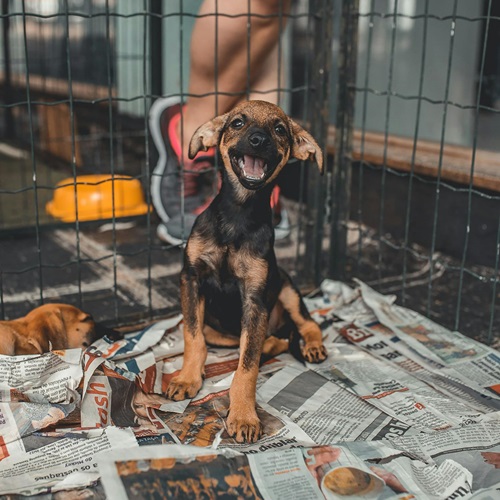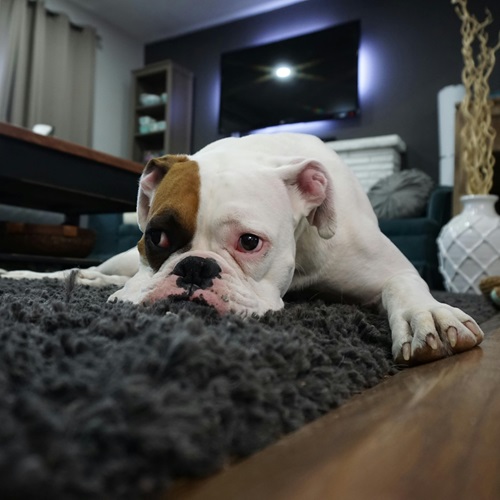The Challenge of Housebreaking a New Puppy
Housebreaking a new puppy can be a challenge, but it is a challenge well worth undertaking. Housebreaking a puppy is essential to maintaining a happy and healthy home environment for you and your dog. Here are some tips to help you get started on your journey:
Puppy Housebreaking 101
Schedule: Develop a daily schedule and stick to it. Puppies need to go to the bathroom much more frequently than an adult dog. On average a puppy needs a potty break once every 3 hours or so. A consistent routine will help your puppy learn when and where you want them to go to the bathroom. By taking your puppy out at the same time day in and day out will show them when and where to go. Reinforce the good behavior when they go to the bathroom outside. We suggest starting the housebreaking process outside and completely ignoring the paper training. By paper training you are making the process harder resulting in possibly having to retrain your dog.
Crate Training: Properly using a crate emphasizes that this is their “den” and dogs do not like to go to the bathroom in their den. Crate training can help them learn to hold it in while they’re safely secured in their crate. A crate can be a useful tool for housebreaking, but it should never be used as a punishment. You want your puppy to have a positive association with the crate, they should feel comfortable staying there.
Look for clues: Watch your puppy to help identify any clues indicating that they need to go out. Keep a lookout for any signs that your puppy needs to go outside for a walk, such as sniffing, squatting, restlessness or circling. When you see these behaviors it’s time to immediately go outside. Never carry your puppy outside but rather choose a command to signal that it is time to go out. You should always use the same command, puppies like and need a routine that they will become familiar with. When your puppy is finished doing their business, praise them – puppies love attention and affection, so let them know they did a good job!
Verbal Cue: Use a consistent verbal cue every time you take your puppy outside. This will help them learn to associate this command with going out. Using the same phrase conditions your dog to the act of going out. Provide clear, concise commands so it’s easier for your dog understand what you want them to do. Once outside, Take your puppy to the same spot each time. Associate this designated area with the act of going outside to help reinforce the behavior.
Accidents Happen: When an accident happens, promptly clean it up. Use an enzymatic cleaner to remove any traces so your dog won’t identify that spot as place to go the bathroom in the future. Don’t punish your dog when this happens. Yelling or swatting your puppy will only make the training process harder. Punishment can be counterproductive and may make your puppy scared of you.
Positive Reinforcement: After a successful trip outside make sure to use positive reinforcement. Reward your puppy with treats and praise every time they do their business outside. Praise is essential in the housebreaking process. A treat or a pat on the back for a job well done will make them feel more confident. While mistakes can and will happen and you may get frustrated – it is very important to not punish your dog.
For example, start each day by waking up at 7 a.m. and immediately taking your pup out of their crate to go outside a walk. Remember a puppy need to go to the bathroom every 3 hours or so on average. Give them the same command every time “Go Potty” and then quickly take them outside to their designated spot. After they go to the bathroom say “Good Dog” and give them a treat or a pat on the back. If an accident happens, clean it up quickly and completely with an enzymatic cleaner. Don’t worry about it and don’t yell at your puppy, just regroup and try the whole process again later. With a little hard work your puppy will be housebroken in no time.




